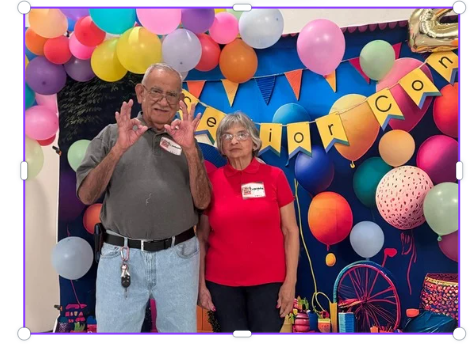Project Nourish: Utilizing Food Pantries as an Entry Point for addressing a variety of needs in rural southern Arizona
- SEAHEC

- May 3, 2024
- 2 min read
Updated: May 6, 2024
During the COVID 19 pandemic, SEAHEC collaborated with numerous agencies throughout southern Arizona to combat the pandemic, providing health education and outreach to those most in need. Out of that work, our relationship with Graham County Health Department, the Gila Valley Food Coalition and a variety of local agencies in Graham ad Greenlee Counties was strengthened. One of the negative effects of the pandemic, was the increase in food insecure communities and families in our service area. In a collaborative effort to address the related issues of nutrition, food insecurity and other economic factors, the Gila Valley Food Coalition asked SEAHEC to work together in responding to a Thriving Communities grant of the Community Food Bank of Southern Arizona. SEAHEC, Graham County Health Department and GVFC conceptualized food pantries as an entry point for other social services, empowering pantry guests to address a variety of needs in addition to food.

Specific objectives of the project included:
Increase health and nutrition education and referral to ancillary services, including providing nutrition and health education to senior centers in Graham and Greenlee counties;
Increase use of pantry food being distributed;
Work with health department to update available resources and services in the Gila Valley;
Outreach to raise awareness of existing services; and
Identify barriers to obtaining health insurance and help pantry guests apply for health care plans.

Over the past year, SEAHEC has strengthened its work with community partners and provided a variety of services at pantries including: St. Vincent de Paul; Duncan Food Pantry; Clifton/Morenci Food Pantry; Clifton, Safford and Duncan Senior Centers. We have reached over 1,500 people during this program year, through pantries outreach events and senior centers, empowering them through resource sharing, nutrition education, service referrals and more. According to a survey of pantry guests, one of their most appreciated activities has been the sharing of recipes and food demonstrations with those food and produce provided during pantry distributions. With SEAHEC CHWs offering tasty and low-cost meals, pantry guests are then inspired to utilize pantry products in nutritious and creative ways. SEAHEC CHWs provide printed recipes , in English and Spanish and guests have returned to inform us how they had indeed prepared these foods for their families. At the same time, through informing pantry guests of available health services, pantry guests are now availing both primary health and mental health services, and ancillary services such as diaper distributions, utility assistance and resources for the homeless.

Erin Sol, SEAHEC Community Health Worker, shares her thoughts on the impact of Project Nourish:
“As a CHW working in the community, it is rewarding to engage with community members face to face, listening to their stories and responding with empathy and that human connection that is often times missing with today’s society.
At the same time, as CHWs we have been able to provide valuable service including our nutrition education and recipes and connecting our community members with much needed services such as rental and utility assistance. Many people in our rural communities are struggling economically and our assistance has empowered them to respond to their struggles. “




Comments